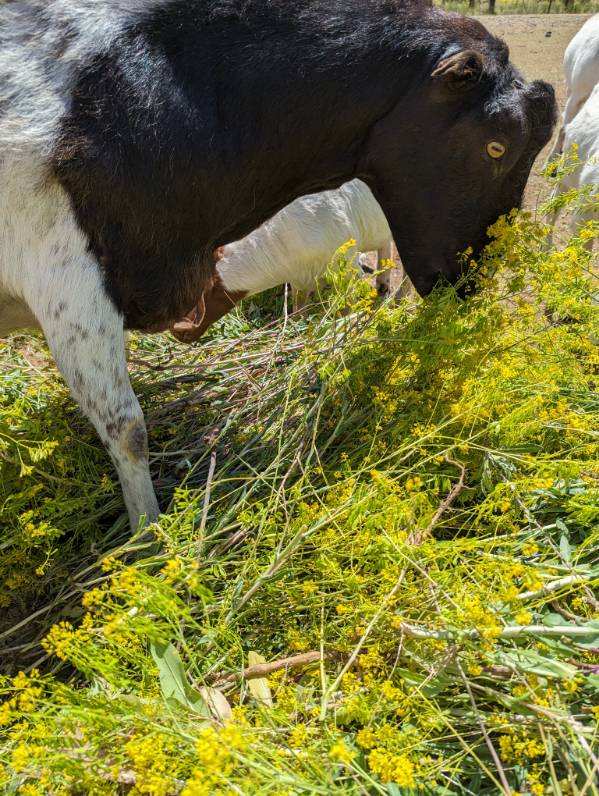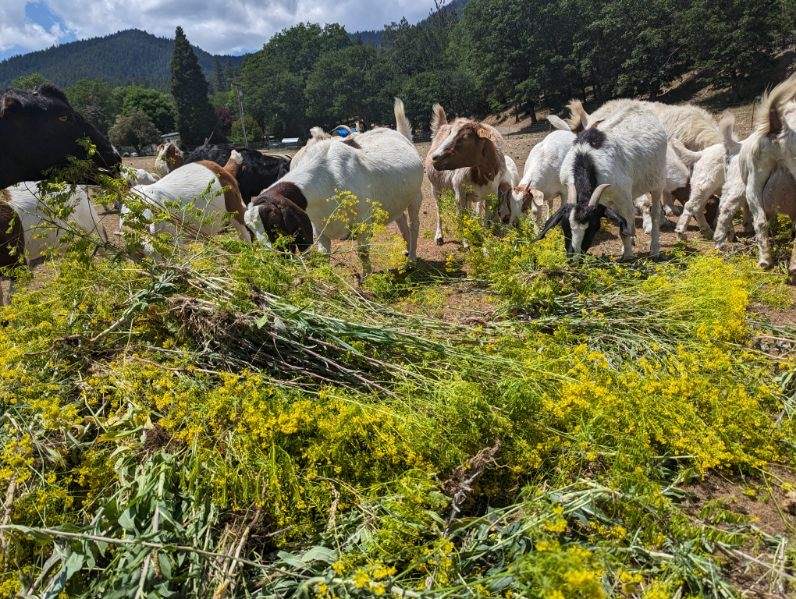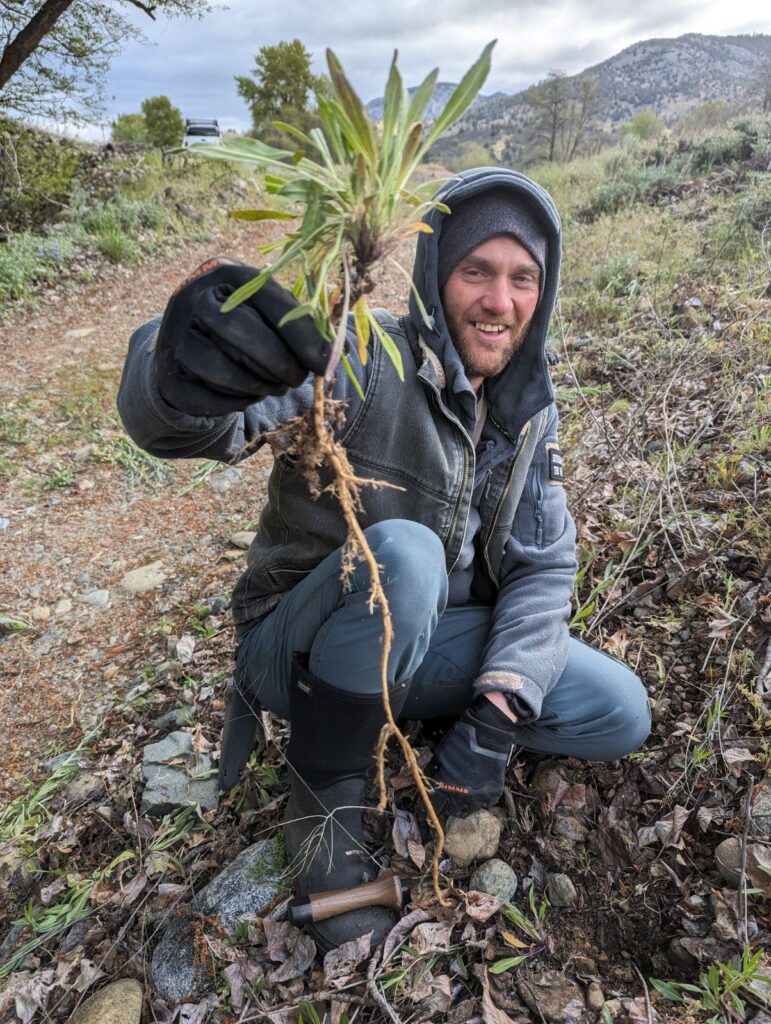Dyers woad, also known locally as Marlahan Mustard, is a non-palatable, aggressive weed with allelopathic properties. Originally cultivated as a source of Indigo dye and known to be unleashed in the Scott Valley, this plant now has expanded to much of the Klamath Basin.
SRWC is committed to trying to set it back and not allow it to consume project areas and areas of interest. We also are trying to establish an area in and around Etna and as we gain control, we plan to move outward.
There is a large community effort also who contribute to this effort and we think, over time, we may be able to reduce the spread. In addition, there is another promising option! According to Jodi Aceves, Senior Deputy Agricultural Commissioner/Sealer, Siskiyou County Department of Agriculture,
“The Dyer’s Woad Rust (Puccinia thlaspeos, “Rust”) was introduced into two locations of Siskiyou County (one in Shasta Valley and one in Scott Valley) in 2015. Monitoring of the sites occurred for several years after release and no evidence of survival was detected. A couple finds of other agents that were effecting some Dyer’s woad plants, during these years, were found to not be the Rust that was released. Several consultations with the University of Idaho and the results of testing of the Dyer’s woad plants in our area revealed that California and Oregon have a different Dyer’s woad iotype. Given this information and the fact that the Rust is so specific to Dyer’s woad, it was thought that the Rust might not be able to survive due to the differences in biotype.”
Photos from the 2024 Woad Season








